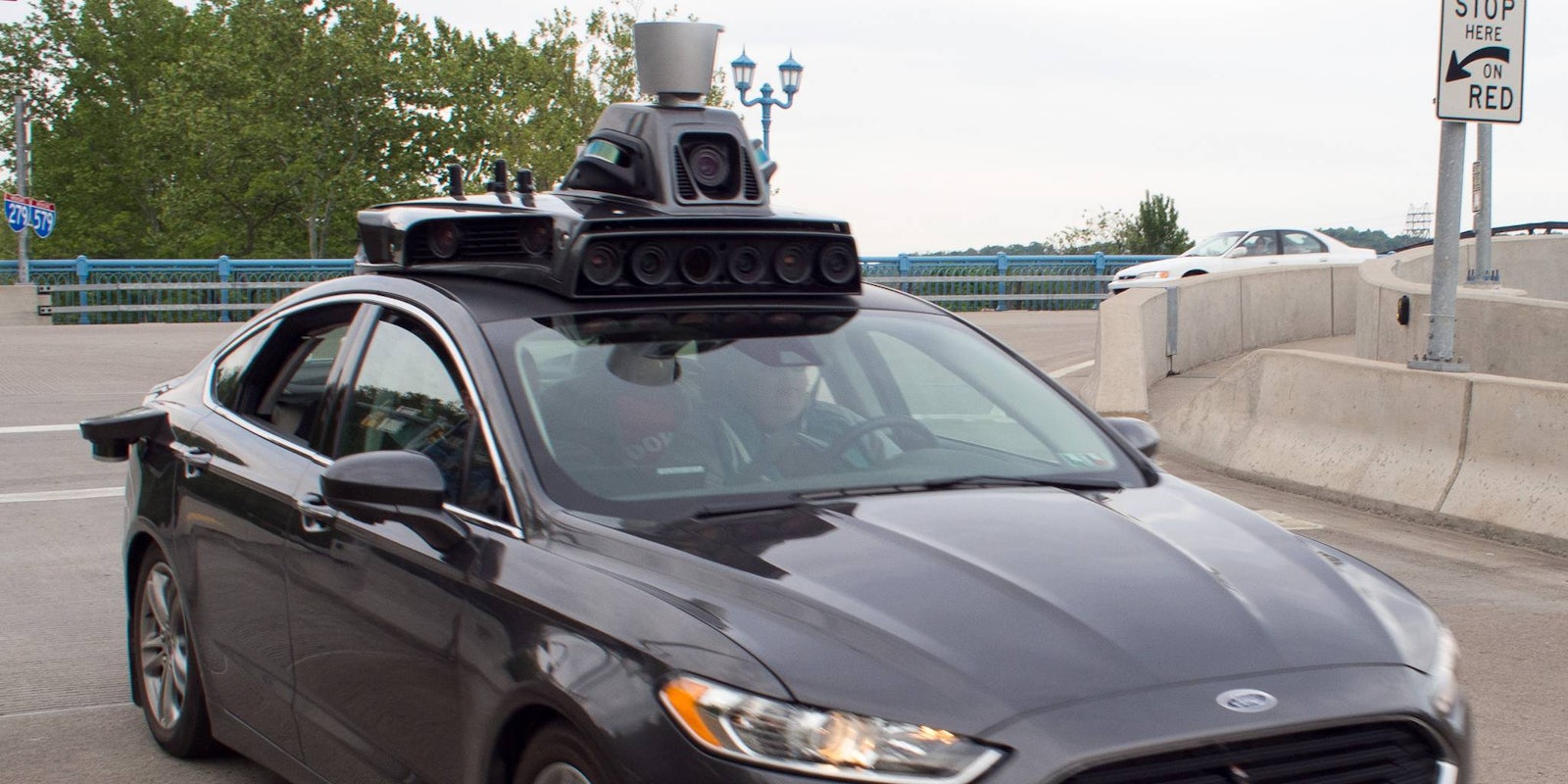Uber plans to continue rolling out self-driving cars on the streets of San Francisco despite threats of legal action from California regulators. The California DMV has warned the company that it is in violation of “autonomous vehicle” testing laws and must obtain a permit to operate self-driving cars in the state.
In a press call on Friday, an Uber executive said the law doesn’t apply to Uber’s “self-driving cars” because they aren’t actually “autonomous vehicles,” as defined by California regulation.
“Autonomous vehicles are defined as cars equipped with technology that can drive a vehicle without the active physical control or monitoring by a human operator … the self-driving Ubers that we have in both San Francisco and Pittsburgh today are not capable of driving without active physical control or monitoring,” Anthony Levandowski, the vice president of Uber’s Advanced Technologies Group, told the Daily Dot.
However, Levandowski’s definition is only a part of California vehicle code section 38750 which also states that “‘Autonomous vehicle’ means any vehicle equipped with autonomous technology that has been integrated into that vehicle.”
In other words, whether Uber’s self-driving cars are capable of driving autonomously is one part of the story and whether they are equipped with autonomous technology is another. Uber has publicized the vehicles as self-driving and shaped the public perception that lead many to believe the cars are truly “autonomous.” Yet it seems Uber is now trying to backpedal away from that messaging.
Uber’s carefully crafted communications around the self-driving cars have not changed the DMV’s stance on the issue.
In a follow up letter to Uber, the office of California Attorney General Kamala D. Harris asked Uber to comply with the previous requests from the DMV.
We as attorneys for the Department of Motor Vehicles, by this letter, are asking Uber to adhere to California Law and immediately remove its “self-driving” vehicles from the state’s roadways until Uber complies with all applicable statutes and regulations. If Uber cannot advise the undersigned that it will immediately remove its self-driving vehicles from California public roadways until it obtains the appropriate permit, as 20 other companies have done, the Attorney General will seek injunction and other appropriate relief.
Still Uber says there are no plans to remove self-driving cars from California roads.
“We respectfully disagree with the California Department of Motor Vehicles’s legal interpretation of today’s autonomous regulations, in particular that Uber needs a testing permit to operate its self-driving cars in San Francisco,” said Levandowski. “From a technology perspective, self-driving Ubers operate in the same way as vehicles equipped with advanced-driver assist technologies—for example, Tesla auto-pilot and other OEM’s traffic jam assist. This type of technology is commonplace on thousands of cars driving in the Bay Area today, without any DMV permit at all.”
Interestingly enough, Tesla is on the list of manufacturers that did receive an “autonomous vehicle” permit, according to the California DMV website.
It’s still unclear why Uber is so averse to getting the permits when so many other companies have. It could be because of the oversight that comes with being a part of the DMV’s autonomous vehicle testing program—it requires its participants, which include Google and Mercedes Benz, to submit accident reports and to annually summarize “disengagements of the technology during testing.”
But one thing is for sure if you listen to Uber describing its self-driving cars now: They sound a lot less like the cars of the future and more like the cruise control we’ve always known.
Update 8:01am CT, Dec. 22: After the California DMV revoked the registrations for the cars in Uber’s self-driving pilot program, the ride-hailing company has suspended its tests in that market.


